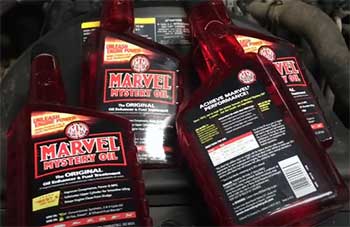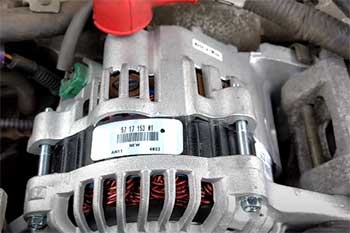Let me tell you, keeping your car’s engine humming like a well-tuned guitar takes more than just filling up the tank and hitting the road. It’s about giving your engine the love it deserves, and that starts with a quality oil filter.
After years of tinkering with my vehicles, I’ve landed on the STP Extended Life Oil Filter as my go-to choice. It’s affordable, reliable, and built to keep your engine clean for the long haul.
Trust me, if you’re serious about your car’s performance, this filter is a game-changer you’ll want in your maintenance arsenal.
My Journey With The STP Extended Life Oil Filter
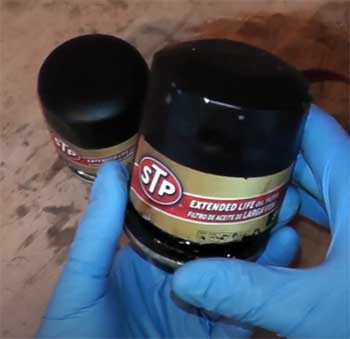
Picture this: it’s a crisp Saturday morning, and I’m in my garage, ready to give my 2017 Jeep Patriot a much-needed oil change.
I’ve got my tools spread out, a fresh jug of synthetic oil, and a shiny new STP Extended Life Oil Filter in hand.
I’d heard the buzz about this filter—rated for up to 10,000 miles, built tough, and priced right—so I was eager to put it to the test.
My Jeep’s no spring chicken, with nearly 100,000 miles on the odometer, so I needed something that could keep up with its demands without breaking the bank.
The first thing that struck me was how sturdy the filter felt.
It’s got that satisfying heft, like it’s ready to take on whatever gunk my engine throws at it. Installation was a breeze—screwed on smoothly with no fuss, and the silicone gasket gave me confidence it wouldn’t leak.
After pouring in the oil and firing up the engine, I checked for drips. Nothing. Just a clean, quiet hum. Over the next few months, I kept an eye on performance. My Jeep felt peppy, oil pressure stayed steady, and when I checked the dipstick, the oil looked cleaner than I’d expected for a vehicle with some city driving under its belt.
What really sold me was the peace of mind. I’m not one to baby my car with constant oil changes, so knowing this filter could handle 10,000 miles gave me flexibility. I drive a mix of highway and stop-and-go traffic, and the STP Extended Life held up like a champ.
No weird noises, no pressure drops, just smooth sailing. I even took it on a 400-mile road trip, and the engine purred like it was fresh off the lot. That’s when I knew I’d found a keeper.
Unpacking The Pros of The STP Extended Life Oil Filter
- Built to Last Longer Than Your Average Filter
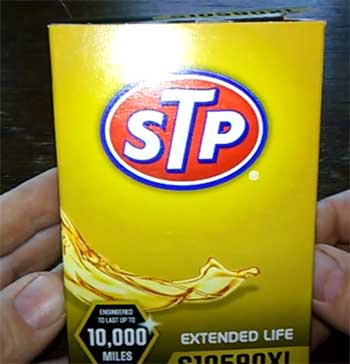
Let’s talk about why this filter stands out.
The STP Extended Life is designed for folks like you and me who want to stretch oil change intervals without compromising engine health.
Rated for up to 10,000 miles, it’s perfect for synthetic oil users who don’t want to crawl under their car every 3,000 miles.
I’ve pushed it to 8,000 miles in my Jeep, and the oil still looked good, with no signs of sludge or wear.
That longevity saves you time and money—fewer trips to the garage mean more cash in your pocket.
- Top-Notch Construction That Inspires Confidence
When I first held the STP Extended Life, I could tell it wasn’t some flimsy knockoff. The canister is rugged, built to withstand high oil pressure and extreme temperatures. The synthetic fiber blend media inside is the real hero—it traps tiny contaminants that could chew up your engine over time.
I’ve cut open used filters (yeah, I’m that guy), and the media in this one was still intact, holding a surprising amount of debris without clogging. That’s the kind of durability that makes you trust a product.
- Budget-Friendly Without Skimping on Quality
You don’t have to sell a kidney to afford the STP Extended Life. I picked mine up at AutoZone for about $9 as part of an oil change deal, which is a steal for a filter that performs this well.
Compare that to premium brands charging $15 or more, and it’s clear you’re getting serious bang for your buck. For DIYers like me, who want quality without the markup, this filter hits the sweet spot.
- Wide Compatibility for All Kinds of Rides
One thing I love is how versatile this filter is. Whether you’re driving a Jeep, a BMW, or a Dodge, there’s likely an STP Extended Life model that fits. I’ve used it on my Patriot and recommended it to a buddy with a Toyota 4Runner, and it worked like a charm for both.
The range of thread sizes and designs means you’re not stuck hunting for a specialty filter. Just check your vehicle’s specs, and you’re good to go.
- Improved Fuel Efficiency and Engine Protection
Here’s a bonus: cleaner oil means a happier engine, and a happier engine can sip less fuel. I noticed a slight uptick in my Jeep’s MPG after switching to the STP Extended Life, likely because the filter keeps the oil flowing smoothly without contaminants gumming things up.
Plus, that synthetic media does a stellar job of protecting your engine from wear, which is crucial if you’re planning to keep your car for the long haul.
The Cons You Need To Know About
- No Silicone Anti-Drain Back Valve
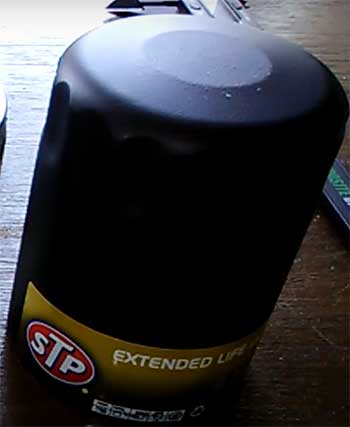
Now, let’s keep it real—nothing’s perfect.
One thing that bugs me about the STP Extended Life is the lack of a silicone anti-drain back valve.
This valve keeps oil from draining out of the filter when your engine’s off, ensuring quick lubrication on startup.
Without it, I’ve noticed a slight delay in oil pressure buildup when I start my Jeep cold.
It’s not a dealbreaker, but it’s something to consider if you’re in a cold climate or start your car frequently.
- Slightly Pricier Than Basic Filters
While the STP Extended Life is a bargain compared to high-end filters, it’s not the cheapest option on the shelf. Basic STP filters or off-brand ones can cost as little as $5, while this one hovers around $8–$10.
For me, the extra few bucks are worth it for the extended life and better filtration, but if you’re changing oil every 3,000 miles, you might not need the upgrade.
- Limited Availability for Niche Vehicles
Although the filter fits a wide range of cars, I’ve heard from friends with older or specialty vehicles that finding the right STP Extended Life model can be tricky.
For example, a guy on a forum mentioned struggling to find one for his 1970 Chevy small block. If you’ve got a rare ride, double-check compatibility before getting your hopes up.
Tips To Get The Most Out of Your STP Extended Life Oil Filter
- Pair It with Synthetic Oil for Best Results
If you’re going to use the STP Extended Life, don’t skimp on the oil. I learned this the hard way when I tried pairing it with conventional oil early on—my engine didn’t feel as smooth, and the oil got dirty faster.
Synthetic oil, like Mobil 1 or STP’s own synthetic blend, complements the filter’s long-life design. The synthetic media in the filter is built to handle the extended intervals that synthetic oils allow, so you’re maximizing both components’ potential.
- Stick to a Reasonable Oil Change Schedule
Just because the filter is rated for 10,000 miles doesn’t mean you should push it to the limit every time. I aim for 7,500–8,000 miles, factoring in my driving habits (city traffic, occasional towing).
If you’re in a dusty area or do a lot of stop-and-go driving, consider changing closer to 6,000 miles. Check your owner’s manual for your car’s recommended interval, and use that as a baseline to avoid overextending the filter’s life.
- Inspect for Leaks After Installation
When I first installed the STP Extended Life, I made the rookie mistake of not double-checking the gasket. A small leak started, and I caught it before it became a mess.
Always wipe the mounting surface clean, apply a thin film of oil to the gasket, and tighten the filter by hand (about three-quarters of a turn after contact). Check for leaks after running the engine for a minute, and tighten slightly if needed.
- Monitor Oil Pressure and Engine Performance
Keep an eye on your oil pressure gauge (if your car has one) or listen for odd noises during startup. I noticed a slight pressure drop with the STP Extended Life compared to a premium filter like Mobil 1, likely due to the missing anti-drain back valve.
If you see consistent low pressure or hear ticking, it might be time to swap the filter early or switch brands.
- Cut Open Used Filters for Insight
This one’s for the gearheads like me. If you want to see how your filter’s performing, cut it open after removal (carefully, with a filter cutter or hacksaw). I did this with my STP Extended Life after 8,000 miles, and the media was packed with debris but still structurally sound.
It’s a great way to confirm the filter’s doing its job and to spot any unusual wear in your engine.
How STP Extended Life Stacks Up Against The Competition?
- STP Extended Life Vs. MicroGard Oil Filter
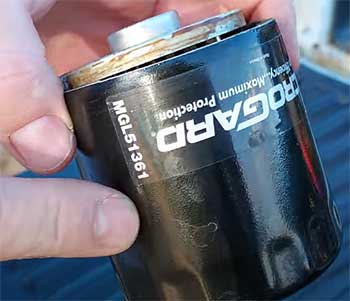
Let’s kick things off with the MicroGard Oil Filter, a budget-friendly option I’ve seen at auto parts stores like O’Reilly.
Priced around $6–$8, it’s a touch cheaper than the STP Extended Life, which I grabbed for about $9.
MicroGard’s filters are solid for basic maintenance, using cellulose media designed for 5,000-mile intervals.
I tried one on my Jeep during a pinch, and it did the job, but the oil looked dirtier than with the STP after 4,000 miles.
The STP’s synthetic blend media traps smaller particles and lasts up to 10,000 miles, making it a better pick for synthetic oil users like me. MicroGard’s lack of an extended-life rating and flimsier canister made me question its durability for longer intervals. If you’re doing frequent oil changes with conventional oil, MicroGard’s fine, but for extended performance, I’d stick with the STP.
- STP Extended Life Vs. Bosch Oil Filter
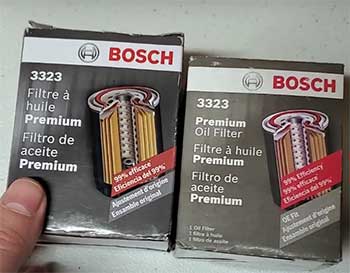
Next up is the Bosch Oil Filter, specifically their Premium line, which I tested on a friend’s Honda CR-V. Priced around $10–$12, it’s slightly pricier than the STP Extended Life.
Bosch boasts a 99% filtration efficiency and a silicone anti-drain back valve, which I noticed gave a smoother startup compared to the STP’s slight delay in cold conditions.
The Bosch filter’s steel canister felt robust, but so does the STP’s, and I didn’t see a huge performance gap over 7,000 miles.
Both use synthetic media, but the STP’s 10,000-mile rating gives it a slight edge for those stretching oil changes.
Bosch is a great choice if you prioritize quick oil pressure buildup, but the STP’s lower cost and wide availability at AutoZone make it my go-to for everyday driving.
- STP Extended Life Vs. Mobil 1 Extended Performance Oil Filter
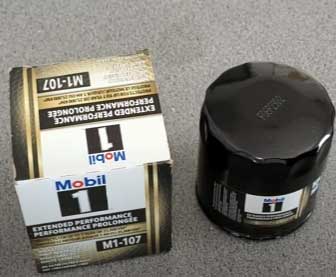
Finally, let’s talk about the Mobil 1 Extended Performance Oil Filter, the premium choice at $15–$20.
I used one on my Jeep for a 9,000-mile stretch, and it’s a beast—99.2% filtration efficiency, a silicone anti-drain back valve, and a sturdy design that screams quality.
The Mobil 1 outperformed the STP in cold starts, with oil pressure stabilizing almost instantly.
However, the STP Extended Life held its own in filtration, keeping my oil clean and my engine happy over 8,000 miles.
The Mobil 1’s price tag is the kicker—nearly double the STP’s cost. For high-performance cars or extreme conditions, Mobil 1 is worth it, but for most folks like me, the STP delivers 90% of the performance for half the price.
Frequently Asked Questions About STP Oil Filters
You might be wondering where these filters come from, especially if you’re picky about quality. STP oil filters, including the Extended Life models, are manufactured by Champion Laboratories, a U.S.-based company with facilities in Michigan and Illinois. That said, some STP Extended Life filters have been reported to have a “Made in China” label on recent boxes, though older versions were made in South Korea. I’ve used both, and the performance was consistent regardless of origin. Champion’s quality control seems solid, but if you’re set on American-made products, double-check the packaging.
Nope, STP isn’t owned by AutoZone. STP is a brand under Clorox’s automotive division, and the filters are made by Champion Laboratories. AutoZone just happens to be a major retailer for STP products, which is why you’ll see them prominently displayed there. I’ve grabbed mine from AutoZone for years because of their deals, but you can also find STP filters at other stores like Walmart or online at Amazon.
This is a tough one because “best” depends on your needs. In my experience, Mobil 1 Extended Performance is hard to beat for its filtration efficiency and premium features, but it’s pricey. Fram Ultra Synthetic is great for super-long intervals, and Purolator Boss is a solid all-rounder. For my money, the STP Extended Life is the best balance of cost, performance, and availability for most drivers. It’s not perfect, but it’s darn close for the average car owner.
Regular oil filters, like STP’s standard models, are typically made with cellulose media and rated for 3,000–5,000 miles. They’re fine for conventional oil and frequent oil changes. Extended life filters, like the STP Extended Life, use synthetic or synthetic-blend media, rated for 10,000 miles or more, making them ideal for synthetic oils and longer intervals. I’ve found the extended life version traps smaller particles and holds up better under stress, but you’ll pay a bit more for that durability.
Why You Should Choose The STP Extended Life Oil Filter?
After putting the STP Extended Life Oil Filter through its paces, I’m convinced it’s a smart pick for anyone who wants reliable engine protection without draining their wallet. It’s tough, long-lasting, and versatile enough for most vehicles.
Pair it with synthetic oil, follow a sensible maintenance routine, and your engine will thank you with years of smooth performance. Grab one at your next oil change—you won’t be disappointed.
